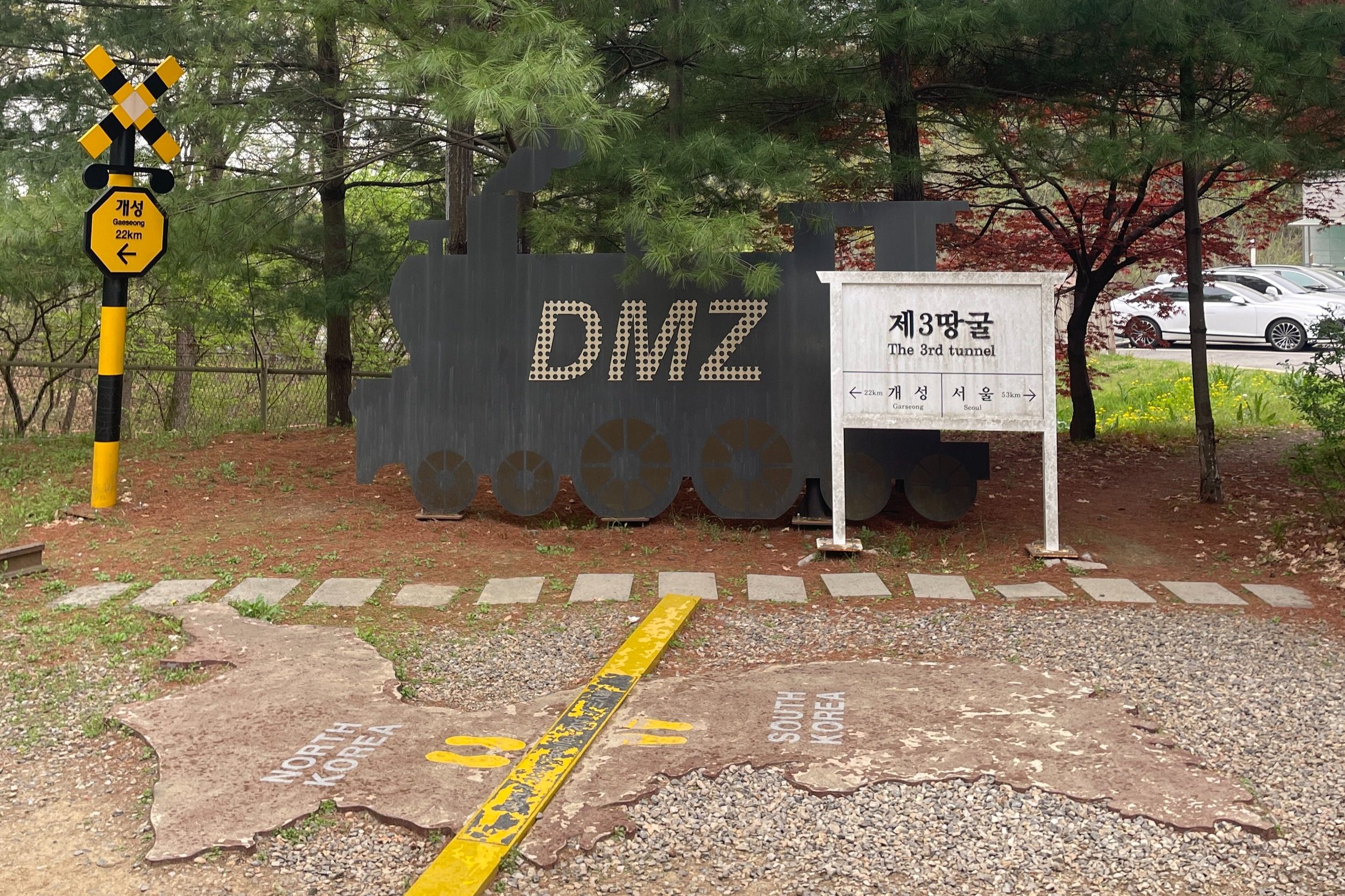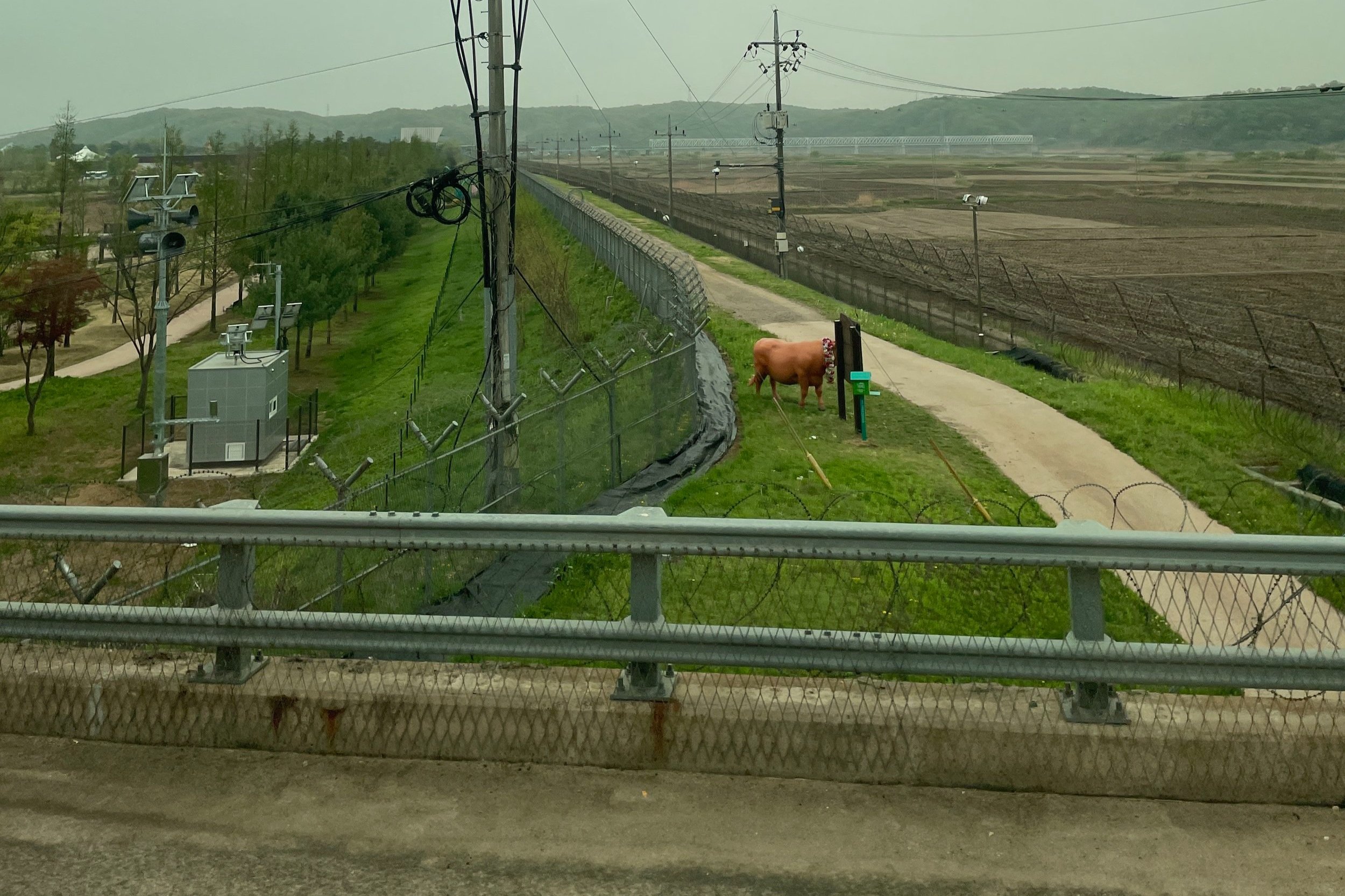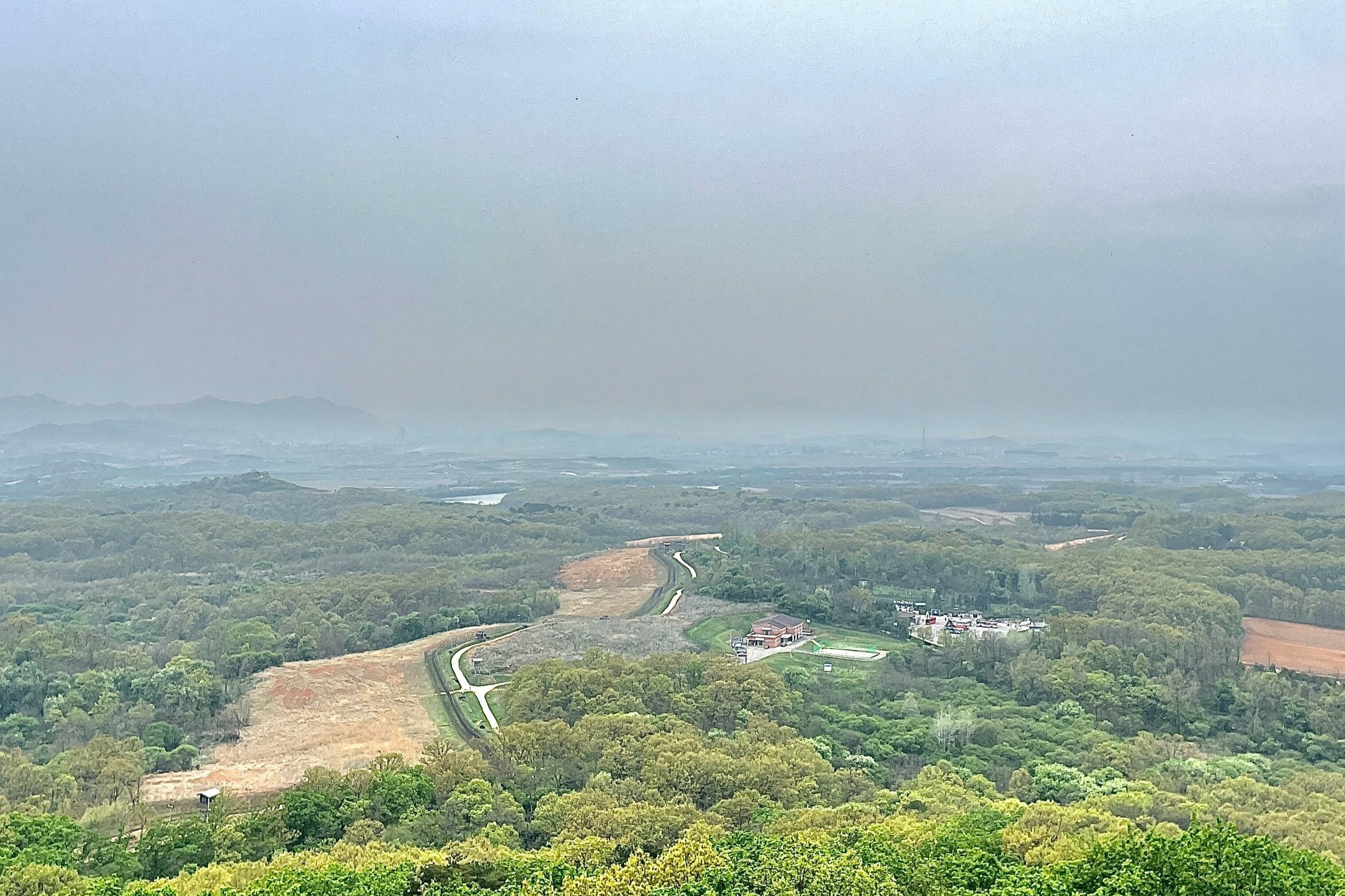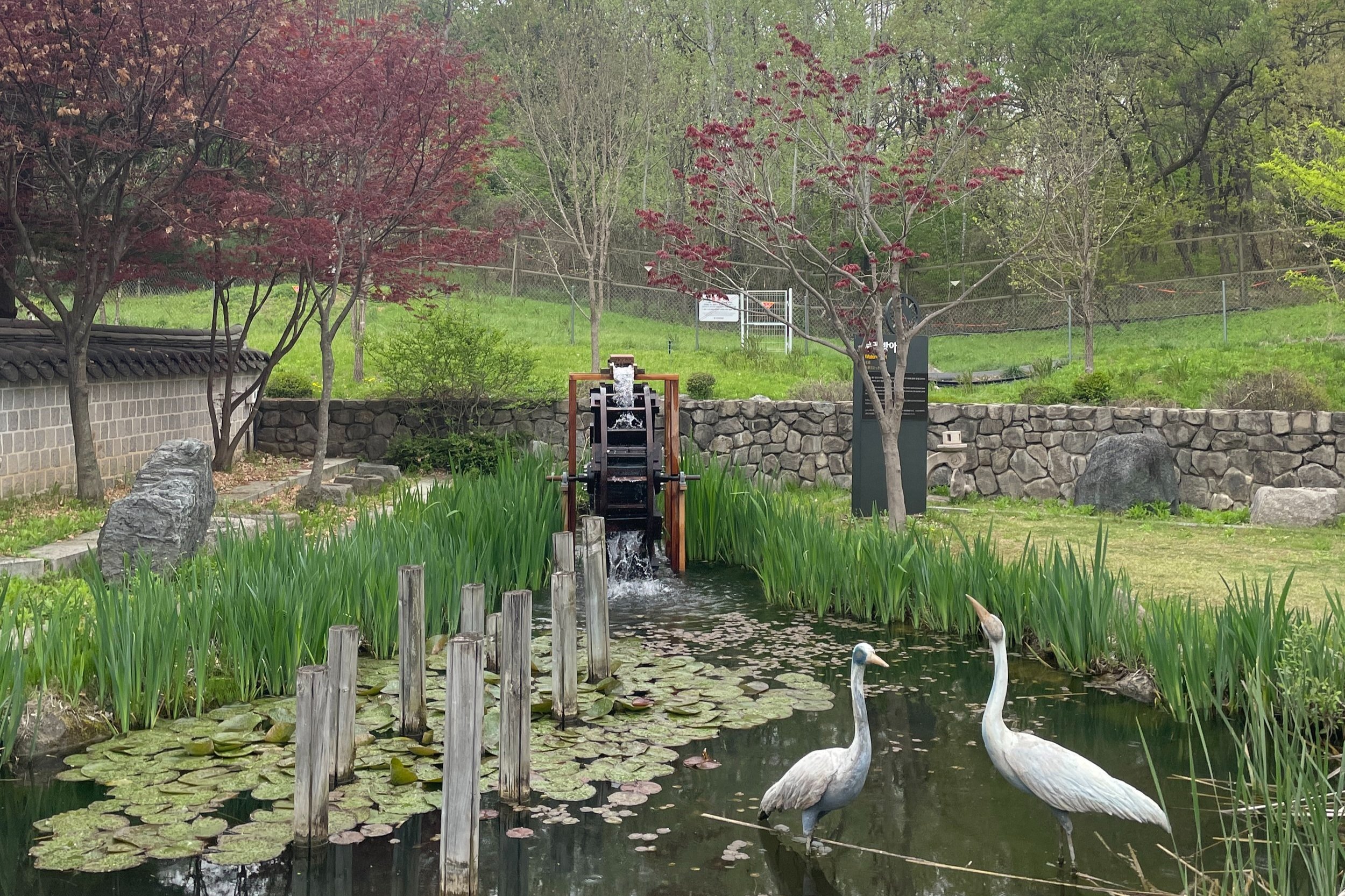What happens on a tour of the DMZ in South Korea?
One of the most popular day trips from Seoul is to the DMZ. It’s one of the best opportunities to understand more about the divide between the two countries and see the actual area where the south and north are divided – known as the 38th parallel.
We booked our DMZ trip with VVIP Travel and it cost around £40 per person. You can choose your collection point and luckily one was close to our accommodation in Hongdae. You can choose the time and length of your tour, but we went for a half-day trip leaving in the morning. So we boarded the coach at 7:30am and within 45-60 minutes we had arrived at our first stop.
Where do you go on a DMZ tour?
During the journey your guide explains the history of Korea and the war between the north and south, which was fascinating (although obviously not particularly impartial). Embarrassingly I didn’t know much about this and one of my reasons for visiting the DMZ trip was to learn more – and it’s definitely inspired me to seek out more information.
Stop 1: Imjingak Park
Imjingak park, the last point separated families can go to pay respects and carry out rituals for their family members in the north. It’s a fairly small area with a number of memorials and even the shell of an old train that’s riddled with bullet holes, which was abandoned here during the war. It’s not the prettiest park – in fact, it’s barely what you envision when you think of a park. But it evokes emotion to think of the 10 million families who couldn’t get closer to their separated loved ones than this point.
Stop 2: The Bridge of Unification
Also known as Cow Bridge, the Bridge of Unification is where you enter the first military checkpoint of the DMZ. It is also famous because in 1998, the founder of Hyundai sent 1,001 cows across the bridge into North Korea to pay the land back for the one cow he took and sold from his father’s farm to afford his ticket to escape to the south. He was also the person who suggested tours be allowed to the area as he was the first Korean to cross the DMZ. The bridge itself isn’t much but it’s the first real taste you get of the division in the area.
Stop 3: The Dora Observatory
The Dora Observatory where you can see across the river border into North Korea. You can see the flag and the propaganda village, the Kaesŏng industrial complex, and the JSA (which is no longer open to visitors).
Stop 4: The Third Tunnel
The Third Tunnel (also known as the 3rd infiltration tunnel or the third tunnel of aggression) was discovered by South Korea in 1978. It’s one of four known tunnels that were dug by North Korea to invade the south, and it’s believed that there are more than 20 along the border. You can walk 250m into the 1635m tunnel, along a 350m ramp that South Korea built to infiltrate and block the invasion attempt.
You can see the spot where a pipe was installed which aided in the detection of the tunnel, and at the end of the tunnel is a sign with the number of days that have passed since the armistice was signed. It’s hard work walking back up out of the tunnel, and if you’re taller than about 160cm you’ll have to bend down for the main 250m of the tunnel, but it’s definitely worth the effort to see this piece of history.
Stop 5: Tae Sung Don (Freedom Village)
Our final stop was in one of the two villages that are located within the DMZ. The other is on the north side and is considered to be a fake propaganda village. Tae Sung Don (Freedom Village) has about 140 residents, most of whom are elderly and were offered homes and land in the village for free after residents had fled during the war.
It’s easy to see why younger people don’t tend to stay here as it’s very isolated with no amenities. Tourists drive through the village itself without getting off the coach. South Korean flags mark the homes that people actually live in. And on the other side is a small shop run by locals where you can buy produce from the region including rice, ginseng, and soybean chocolate.
Is it worth going on a DMZ tour?
If you’re interested in Korean history and seeing a part of the world that a lot of people will never experience then a DMZ tour is definitely worth doing.
It wasn’t a mind-blowing experience. But I found it fascinating and it really made me think more about the situation in North Korea and how strongly the people in the south want unification.
It’s not a dark tourism-style trip that makes you feel like the oppression of the North Koreans is used for entertainment. This very much is not the case. It’s really just a coach trip to an area with a lot of military bases and farm land. You don’t enter North Korea – you can’t even go to the JSA anymore. In fact, the southern limit line and northern limit line are both 2 km away from the actual border. Meaning nobody can really get close at all.
You do have a chance to look over the border into North Korea but again, this doesn’t feel like voyeurism – it’s simply a land border marked by a river. You can’t see the people of North Korea or even their army from the DMZ.
How much does a DMZ tour cost?
We spent 70,000 won per person on our DMZ tour (about £40 each). This included transport, entry, and our guide but does not include food and water. There are some cafes and shops at a couple of the stops so you can stock up during the journey if needed.
What’s the best DMZ tour from Seoul?
We booked our tour with VVIP Travel and it was great. There are a few different options and they are probably all very similar. But I’d definitely recommend this one (and our lovely guide Crystal).
How long is a DMZ tour from Seoul?
You can choose to go on a full day tour morning or afternoon tour, or an extended tour with the option to add on other sights in the northern tip of South Korea. We did consider visiting the Gamaksan Red Suspension Bridge but this added 2.5 hours to the trip.
We chose to go in the morning, leaving Seoul at 7:30am and arriving back in the city at about 2pm which was ideal for us. There is also an option to leave at 10:30am and return at 5:30pm if you don’t want such an early start.
Find out more about how we spent a week in Seoul here.
Note: I chose and paid for my DMZ tour independently. This post is not an advertorial and is a true reflection of my experience with VVIP Travel. However, if you book yours through my Viator link, I might make a little bit of money through affiliation.









